The introduction of USB4 and TBT4 technologies has brought revolutionary advancements in high-speed data transmission, video signal transmission, and power management. With the increasing popularity of USB4 and TBT4, the demand for high-speed, long-distance data transmission is growing rapidly. USB4 and TBT4 support data transfer rates of up to 40Gbps. However, signal attenuation and integrity become significant challenges in long-distance transmission. To address these issues, USB4 and TBT4 LRD (Linear Re-driver) active copper cables have been widely adopted, extending the cable length from 1 meter to 3 meters. To ensure the performance and compatibility of LRD active copper cables, production testing of USB4 and TBT4 LRD cables has become an essential part of the process.
Before selecting production testing equipment for TBT4 and USB4 LRD active copper cables, it is important to understand the similarities and differences between passive and LRD cables:
| Characteristics | USB4 Passive Cable | USB4 LRD Cable |
| Transmission Distance | Up to 0.8 meters (Gen3) / 1 meter (Gen2) | Up to 2 meters or even longer |
| Contains Active Components | No | Yes (Re-driver) |
| eMarker Declaration | Passive Cable | Passive Cable (Compatibility Declaration) |
| Power Consumption | Extremely low | Maximum 1.5W (Vconn power supply) |
| Testing Requirements | Relatively simple | More complex, need to verify performance superior to passive cables |
| Application Scenarios | Short-distance connections | Long-distance, high-performance requirements |
| Cost | Lower | Higher |
| Supported Protocols | USB4, USB 3.2, USB 2.0 | USB4, USB 3.2, TBT3/4 |
As shown in the comparison table, LRD cables cover a broader range of capabilities compared to passive cables. Due to the inclusion of active chips, LRD cables have higher power consumption and more stringent high-speed signal testing requirements.
Both USB4 passive and LRD cables include two major testing items in production testing: functional testing and high-speed channel signal quality measurement. There are also other tests such as environmental adaptability and EMC, which are time-consuming and cannot be included in production testing.
Functional testing mainly includes eMarker, power management, and protocol compatibility tests. eMarker can obtain information such as the maximum current, voltage level, data transfer capability, supported protocols, cable length, manufacturer, and product ID of the cable. The USB4 specification also defines the static and dynamic power consumption characteristics of eMarker.
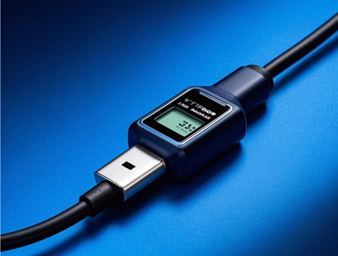
Since the main design goal of USB4 cables is to support high-speed data transmission (e.g., 40 Gbps), the focus of electrical characteristic testing is on signal integrity, insertion loss, crosstalk, and other high-frequency characteristics. Although USB4 cables support power transmission, the performance of power transmission is mainly controlled by the power management module on the device side, and the impact of the cable's DC resistance on overall performance is relatively small.
In the past, DC resistance (such as voltage drop) could be indirectly assessed through other tests (such as VBUS/GND voltage drop tests) without the need for separate DC resistance measurement. Even if it was necessary to measure, there were dedicated wire sequence and resistance measurement devices that were not combined with high-speed measurement equipment. However, USB4 LRD active copper cables are equipped with Re-driver chips, and traditional wire sequence testers and resistance measurement devices cannot obtain accurate results. Additionally, the USB-IF has introduced power consumption specifications for active cables, making power consumption measurement an essential part of the process.
For high-speed channel signal quality measurement of USB4 or TBT4 cables, the USB-IF standards assess the performance of passive cables by testing insertion loss, return loss, crosstalk, and impedance. The introduction of Re-driver chips in USB4 LRD active copper cables brings more uncertainties. For example, S-parameter tests may pass, but actual displays may show sporadic flickering points. This is because Re-drivers are analog chips and cannot restore data like Retimers. Pure signal amplification can also amplify jitter and noise. Therefore, eye diagram measurements have been introduced in the testing of LRD active copper cables. Eye diagram measurements simulate more realistic signal transmission settings, such as Host-end presets ranging from 0 to 15 and Device-end CTLE and DFE settings ranging from 0 to -9dB. High-bandwidth real-time oscilloscopes are generally used to measure the 20Gbps per-channel signal of USB4 GEN3. However, due to the high cost of high-bandwidth real-time oscilloscopes, they are not practical for production testing.
In summary, the testing requirements for functional and signal quality aspects pose significant challenges for the production testing of USB4 and TBT4 LRD cables. Tangling Technology has introduced the CCBT20A Consumer Cable Production Tester, which meets these testing requirements by modularizing all test items.
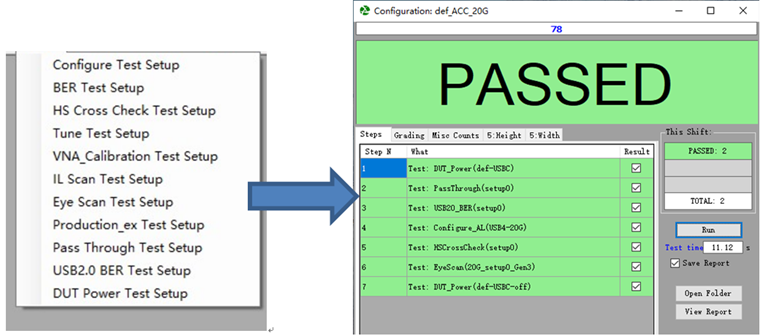
In terms of functional testing, the CCBT20A meets customer requirements for eMarker function parameter comparison, LRD cable power consumption measurement, wire sequence determination, and USB2.0 transmission performance measurement.
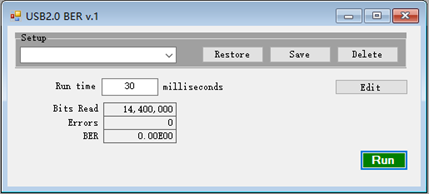
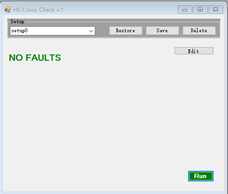
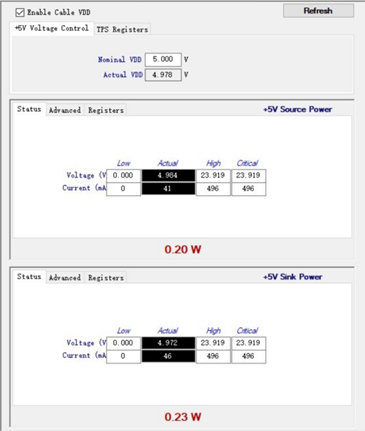
In signal quality measurement, the CCBT20A has made significant efforts in eye diagram, IL, and protocol compliance. The CCBT20A uses the Tune test function to calibrate the optimal Preset and CTLE combinations that meet specifications for different lengths and Re-driver settings, for testing the same product.

The Host-end signal is simulated through the LRD cable for rapid eye diagram overlay scanning to obtain parameters such as eye height, eye width, RJ, DJ, and rise/fall time. These parameters are compared with the TP3 template in the USB4 specification to understand the eye diagram margin of the LRD cable.
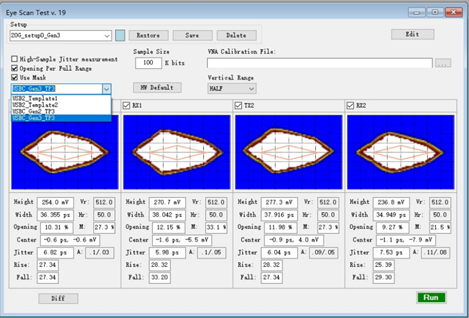
The CCBT20A comprehensively evaluates the measurement of USB4 and TBT4 LRD cables in terms of functionality and high-speed signal transmission quality. A single LRD cable test can be completed in about 10 seconds. These testing methods and results have been compared and validated by large-scale cable manufacturers in the industry, and the test results are fully acceptable. The Preset, CTLE, and eye diagram measurement results have a high degree of match with high-bandwidth real-time oscilloscopes.
To meet more customer testing needs, the CCBT20A has also added multi-frequency differential IL measurement functions to compare with the specification IL curve, further satisfying customers' understanding of loss margin at multiple important frequencies.
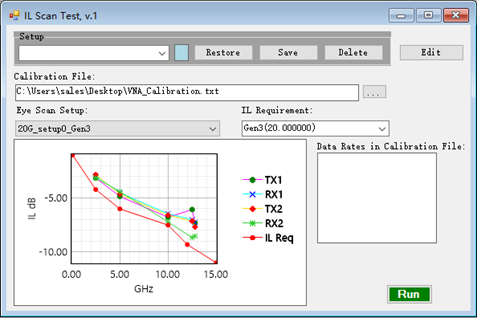
The pursuit of signal quality testing by the CCBT20A continues to be strengthened. More test items will be added in the future to meet the requirements of the USB4 specification. In terms of production usability and data analysis management, the CCBT20A also has corresponding production modes and database interfaces to help cable manufacturers reduce errors and improve product quality.
In addition to being a production testing option for USB4 and TBT4 LRD cable testing, the CCBT20A can also assist passive cable manufacturers in rapid good product screening. The quality inspection of HDMI, DP, QSFP cables can also be integrated into the CCBT20A tester through License changes and upgrades. For more customized measurement needs, please contact us for in-depth cooperation and development.